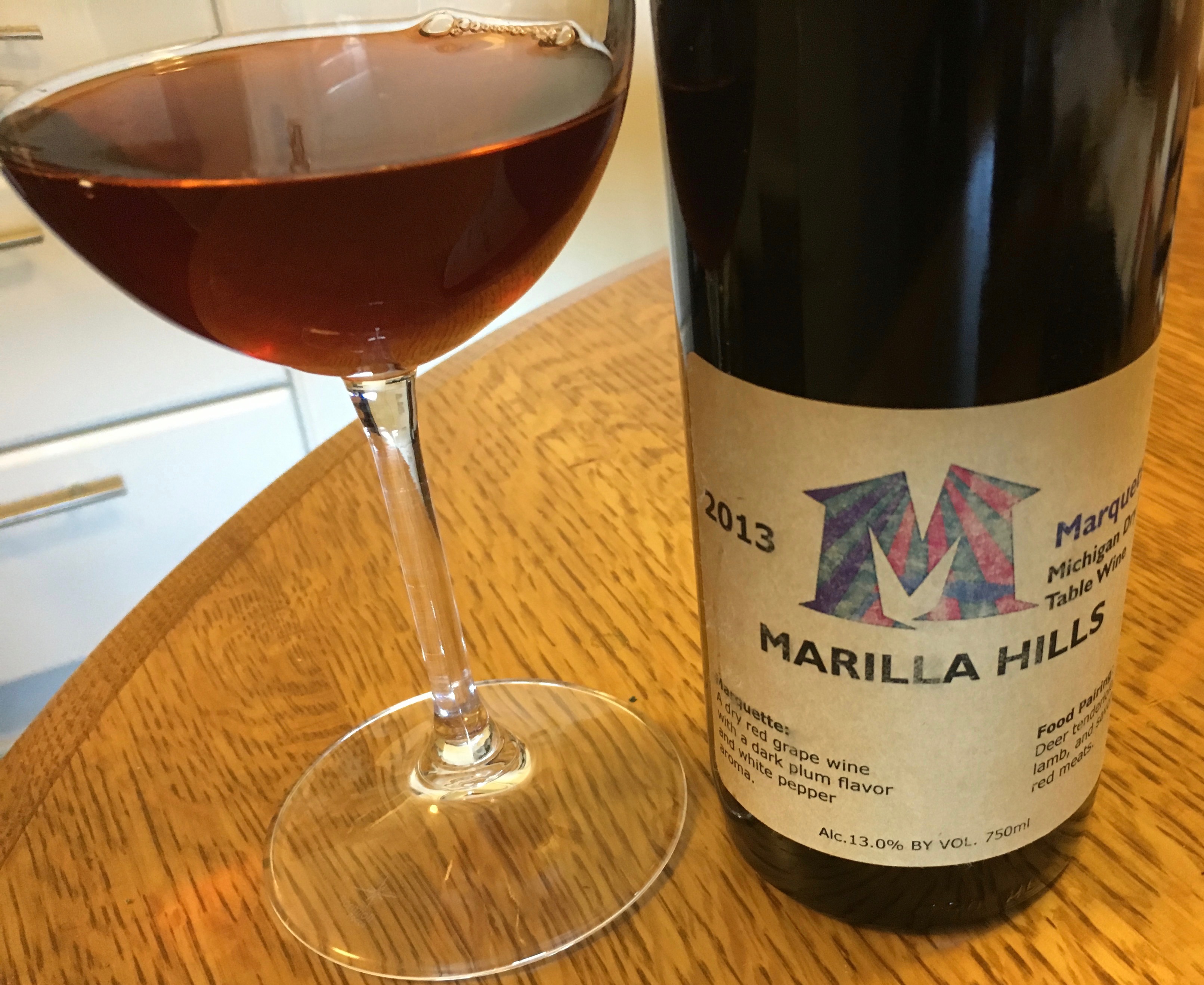Arsenic In Wine; Headache’s and Parkinson’s Disease.
 By: Zachary Strassman
By: Zachary Strassman
While there is a lot of discussion about arsenic in wine and where it comes from, here are some facts. The arsenic is wine is primarily coming from two sources. First is the use of lead arsenate as a pesticide in orchards from 1900-1950’s. Lead arsenate was sprayed to kill codling moths that lay their eggs on developing fruit. The arsenic got stuck in the soil. These apple and pear orchards were then converted to vineyards as demand for wine increased. Secondly the use of treated vineyard posts. Treated lumber has CCA (chromated copper arsenate) which inhibits wood from rotting. CCA was phased out of production in 2004. Organically certified vineyards are prohibited from using treated lumber. This arsenic problem is not new information. The problem is these soils are now contaminated, still contain treated lumber posts and represent some of the most valuable agricultural land on the planet. Any lawsuit will to be fought tooth and nail.
But what if arsenic is just the tip of the iceberg of a heavy metal concoction? In 2008 a study at Kingston University analyzed heavy metals in wine from 13 different countries. Its title “Heavy Metal ions in wines: meta-analysis of target hazard quotients reveal health risks.” was published in the Chemistry Central Journal, 2008. Professor Declan P. Naughton discovered excessive amounts of heavy metals; in particular vanadium, copper and manganese due to their harm to human health. He measured the THQ (target hazard quotients) levels of the metals to determine if they posed a risk to human ingestion. The researchers are quoted as saying
"These values are concerning, in that they are mainly above the THQ value of 1.0. In addition to neurological problems, these ions are also believed to enhance oxidative damage, a key component of chronic inflammatory disease which is a suggested initiator of cancer. Excess intake of metal ions is credited with pathological events such as Parkinsons's disease."
The results showed that different countries had different levels of these metal ions. However most wine samples were not deemed safe. The scientists also said
"The results from this study also question a popular belief about the health-giving properties of red wine: that drinking red wine daily protects you from heart attacks is often related to levels of anti-oxidants. However the findings of hazardous levels of metal ions, which can be pro-oxidants, leads to a major question mark over the protective benefits of red wine."
The study ended there without proposing how the metal ions were getting into the wine. However the most toxic metal ion of concern was vanadium. Vanadium is an essential element for human nutrition but is very toxic at elevated levels. Most interestingly fishy this article did not even address the metal ion arsenic. So now we know that wines are not just contaminated with arsenic but now vanadium, copper and manganese! Luckily another study has discovered where the vanadium is coming from; the answer is quite clear stainless steel tanks.
Pierre-Louis Teissedre discovered that vanadium content of wine was directly related to the length of time the wine sat in stainless steel tanks. Apparently the vanadium dissolved from the walls of the stainless steel tanks and entered the wine. Wine is a very acidic liquid and can react with metals and strip them off. Think of an aluminum pot after making spaghetti sauce. It looks shiny and almost brand new. This is known as acid leeching. Findings were published as “Vanadium levels In French and Californian Wines: Influence on Vanadium Dietary Intake” published in the Journal of Food Additives and Contaminants. Volume 15, 1998. The magic ingredients in stainless steel are iron 65-71%, chromium 18-20%, nickel 8-12%, manganese 2%, silicon .75%, carbon .08%, phosphorus .045%. Stainless steel is welded together with sticks containing a mix of iron 63-68%, chromium 19.5-22, nickel 9-11%, manganese 1-2.5%, copper .75%, molybdenum .75%, silicon .30-.65%, carbon .08%, phosphorus .03%. Every decade or so a winery will have the tanks start leaking and the welds will have to be re-welded. Those weld seam leaks dissolved right into the wine you’re drinking folks! But you may ask where the vanadium from? Vanadium is coming in from vanadium-stainless steel an extremely hard alloy found in cutting tools and car parts. During the recycling of stainless steel vanadium-stainless is not separated out, it’s just all melted together! It does not matter however the levels of chromium and nickel are already off the charts in 95% of all wine on the market and exceed EPA standards for drinking water. The EPA limits chromium and nickel to .1PPM.
So is the French paradox dead? The French Paradox states that wine consumption has a protective effect against heart disease. Recent studies of wine consumption and health have been all over the chart. Some showing benefits, some showing nasty things like breast cancer. Can anyone guess why the results don’t agree? Heavy metal contamination anyone? The French paradox is alive and well. It’s very clear that drinking liquid fruit chalked full of anti-oxidants is health enhancing. The problem is when science catches up to stupid practices and industry refuses to change. Remember that heart doctors used to promote hydrogenated oil as a safer alternative.
Fixes to this situation include removing old treated posts, using bioremediation, and removing the worst offending vineyards. Wineries can remove bare stainless and use oak barrels and protective ceramic coatings (please no epoxy bisphenol A) and ceramic amphora’s. Lastly you as a consumer can vote with your pocket book. Demand your wine be tested by a third party. Buy wine from wineries that don’t use stainless steel. Make your own wine in ceramic, glass or wooden barrels. Make your own beer also; this is not exclusive to the wine industry.
In fact most modern day food processing facilities contain miles of stainless steel pipes. Any acidic food has the potential to leech metals especially liquids. Low pH liquids like pop, fruit juices, tomato products and vinegar containing products are suspect. Could all these processed convenience foods be slowly poisoning us? It is very well know that heavy metals are notoriously hard to get out of the body. Could the 83 year average life expectancy be the point at which chromium builds up to cellular death concentrations? Compromising your health for that bottle of bubbly or that glass of red is just not worth the risk. Remember observations are worth their weight in gold. Why does wine give you a more severe hangover than liquor? Next time you’re at the grocery store observe the guy with a grocery cart full of wine. Does he have bags under his eyes?
Observe the effects of heavy metals. You will not get the same results with fruit juice and vodka. Most scientists attribute sulfites or tyramine in strongly tannic red wines to the cause of wine headaches. I disagree my homemade deep red wines are sulfated at 150-200ppm and I have had several people tell me my wine does not give them the nasty hangovers. I buy store bought reds and one glass will give me a headache. My homemade wines will give you a headache if you over consume them but never from one glass. I would bet $50 that the tyramine is combining with vanadium, chromium and nickel and literally causing vascular damage in the brain. Suppose that all the processed foods have already put heavy metals in your brain and every time you consume wine tyramine-chrome forms right in your brain……. Parkinson’s anyone (Google Afeseh Ngwa H), Alzheimer’s anyone?(Google George J. Brewer) ....oxidative damage is bad for fat based tissue like the brain…….burnt butter in a 500F pan…Sizzle!
The wine Industry must change for the better. Headaches are a sign of tissue damage and are most likely the result of vanadium, chromium, and nickel poisoning not actually the arsenic. Wine is one of the healthiest drinks you can consume as long as the ingredients are well; wine! This is going to take educated consumers voting with their pocket books at the grocery store. Arsenic in wine may be the tip of a heavy metal iceberg but it might help steer the industry towards warmer waters. Perhaps the whole food industry.

Beautiful post
Congratulations @zacharystrassman! You have received a personal award!
Click on the badge to view your Board of Honor.
Do not miss the last post from @steemitboard!
Participate in the SteemitBoard World Cup Contest!
Collect World Cup badges and win free SBD
Support the Gold Sponsors of the contest: @good-karma and @lukestokes
Congratulations @zacharystrassman! You received a personal award!
You can view your badges on your Steem Board and compare to others on the Steem Ranking
Vote for @Steemitboard as a witness to get one more award and increased upvotes!